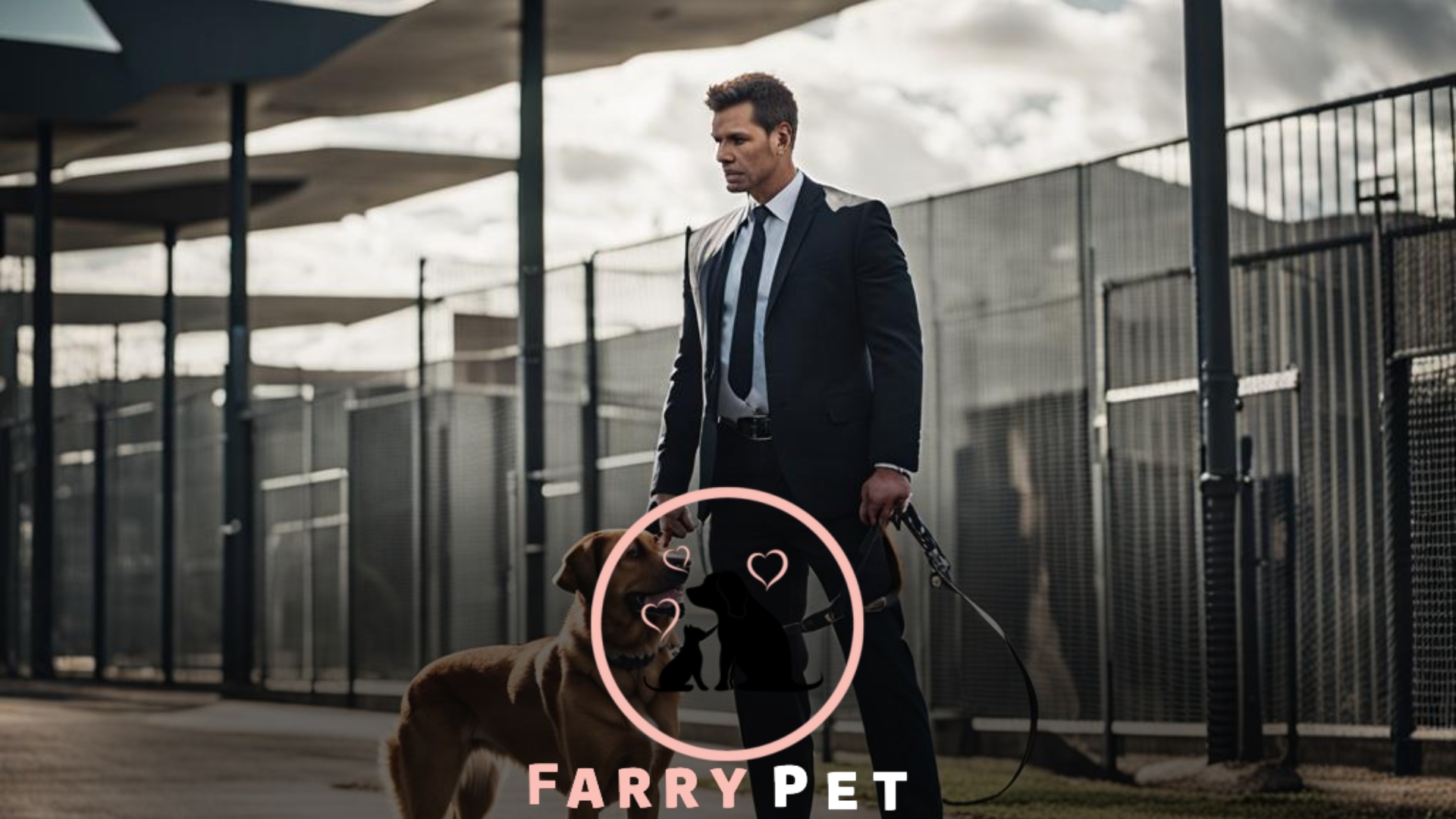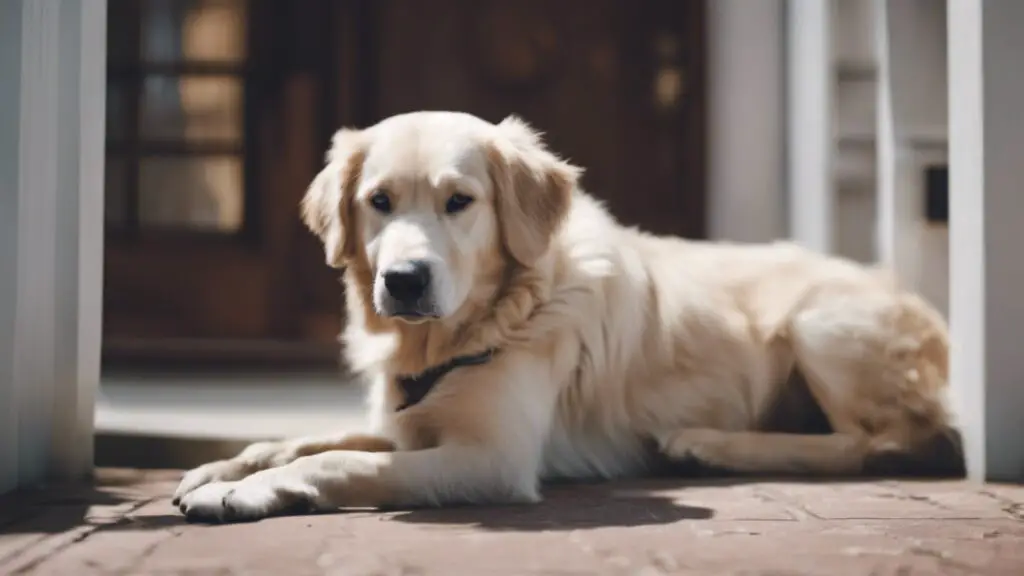
Consistent training and clear boundaries are vital to address dog guarding issues. Seek guidance from a professional dog trainer to ensure safety and proper techniques.
Dealing with a dog’s possessive behavior can be challenging and stressful for any pet owner.
Resource guarding, a common issue where dogs protect their food, toys, or even people, often stems from anxiety or the instinct to defend valuable assets.
It’s crucial to identify this behavior early to prevent escalation and to help your furry friend become a well-adjusted member of the family.
By understanding the underlying causes of guarding and employing the right strategies, you can work towards modifying your dog’s behavior. This can create a more harmonious relationship and a safer environment for everyone involved.
Remember, addressing dog guarding behavior requires patience, consistency, and positive reinforcement, laying the groundwork for long-term success in overcoming these issues.
The Root of Guarding Behavior in Dogs
Understanding why your furry friend fiercely guards their bone or growls when you approach their food may puzzle you.
Dog guarding behavior is rooted deeply in their instincts. Knowing why they do this is crucial to address the issue effectively.
Let’s delve into the underpinnings of such behaviors by examining genetic predispositions and environmental factors.
Genetic Predispositions and Early Signs
Certain dogs are more prone to guarding due to their lineage. Breeds with a history of guarding resources may exhibit these traits more readily.
To identify potential guarding, watch for these early signs in puppies:
- Stiffening when approached during meal times
- A tendency to gobble up food quickly
- Growling over toys or treats
Recognizing these signs early can lead to prompt intervention. This often results in better outcomes and easier behavior modification.
Environmental Triggers and Past Experiences
A dog’s surroundings also play a role in their guarding habits. Factors like competition with other pets or stressful situations can trigger guarding behavior.
Dogs with negative past experiences, like limited access to food, may also exhibit these actions. Essential factors to consider include:
| Environmental Factor | Impact on Behavior |
|---|---|
| Competition for resources | May increase protective tendencies |
| Past neglect or abuse | Can cause persistent guarding |
| Lack of early socialization | Potentially leads to possessiveness |
By understanding the root causes, you can take the first step towards supporting your dog to overcome guarding behavior. Stay tuned for actionable tips to address and rectify these concerns.
Identifying Guarding Behavior
Identifying Guarding Behavior in dogs involves understanding their instinct to protect what they believe is theirs.
This can be a complex issue, but early recognition of the signs can lead to timely and effective intervention.
Let’s explore how to spot this behavior in your furry friend.
Common Objects and Situations
Dogs often guard items they value highly. These can include:
- Food: Bowls, treats, or areas where food is usually given.
- Toys: Favorite chew toys or playthings they’re particularly attached to.
- Spaces: Beds, crates, or favored spots in the home.
- People: A specific family member the dog is very close to.
It’s important to note that any situation that makes a dog feel threatened can trigger guarding behavior.
Warning Signs and Body Language
Recognizing a dog’s body language is crucial in identifying guarding issues. Here are key warning signs:
| Behavior | Description |
|---|---|
| Stiffening | Dog becomes rigid when approached. |
| Growling | A low warning sound indicates discomfort or threat. |
| Snapping | Quick bite motions toward a person or another animal. |
| Baring Teeth | Displaying teeth as a threat when approached or challenged. |
| Intense Staring | A fixed gaze on the perceived threat, signaling a warning. |
Understanding these signs can help prevent escalations and aid in managing guarding tendencies effectively.
Professional Assessment and Advice
Dealing with a dog’s guarding issues might be a complex situation. You must understand when specialized help is necessary.
Getting professional assessment and advice can sometimes be the most effective approach to managing and resolving your furry friend’s protective behaviors.
When to Seek Help From a Behaviorist
Not all guarding behaviors are equal. Know the signs that suggest a need for professional intervention:
- Aggression escalation: Growling turns to snapping or biting.
- Guarding non-food items: Toys, spaces, or even people.
- No improvement: Training at home isn’t working.
- Stress signals: Your dog is always tense or anxious.
A behaviorist’s guidance is crucial if your canine companion shows any of these signs. They offer targeted strategies that cater to your dog’s unique needs.
Understanding Professional Evaluations
Behaviorists conduct thorough evaluations. These sessions pinpoint the root causes of your dog’s issues.
- Observation: The expert watches how your dog behaves in various scenarios.
- History review: Discussion of your dog’s past experiences and routines.
- Behavior analysis: Identifying specific triggers and reactions.
- Custom plan: Developing a step-by-step training methodology.
With a behaviorist’s insight, tackling your dog’s guarding issues becomes strategic and informed, leading to a more peaceful coexistence.
Training Techniques to Reduce Guarding
Dogs sometimes guard their things. This behavior can be troubling. But training helps fix it.
Here, learn techniques to help your dog stop guarding.
Positive Reinforcement Strategies
Positive reinforcement rewards good behavior. It makes training fun. This teaches dogs that sharing is good. Use treats and love when your dog behaves. Here’s how to apply it:
- Stay Calm: Use a soft voice and calm body language.
- Reward Sharing: Give treats when your dog shares.
- Be Consistent: Practice every day for the best results.
- Clicker Training: Click and treat to mark good behavior.
Desensitization and Counterconditioning
Desensitization is making your dog used to a situation slowly. Counterconditioning changes your dog’s reaction to it. Here’s a simple guide:
- Start Small: Show your dog the guarded item from far away.
- Go Slow: Move closer step by step over many days.
- Observe Signs: Watch for calmness before moving closer.
- Introduce Touch: Touch the item, then give a treat.
Remember to take breaks and not rush. Slow and steady wins the race!
Creating a Safe and Trusting Environment
Creating a safe and trusting environment is essential when dealing with dog guarding issues. Dogs need to feel secure to let their guard down—literally.
Building such an environment involves routine, exercise, and play, fostering stability and trust. A calm, predictable space reassures your dog that resources are ample and threats are minimal.
This encourages your dog to relax and discourages guarding behaviors.
Routine and Structure in Daily Life
Setting a consistent routine provides your dog with a sense of security. Dogs thrive on predictability, which reduces anxiety and potential guarding behavior.
Establish fixed times for meals, walks, and bedtime. A structured day-to-day life lets your dog know what to expect and when. This regularity helps to minimize stress and the urge to guard.
- Mealtime: Serve food at the same time each day.
- Walks: Keep them routine, even on weekends.
- Bedtime: Encourage sleeping at the same hour nightly.
The Role of Exercise and Play
Exercise and play are crucial in reducing guarding tendencies. Dogs with plenty of physical and mental stimulation are less likely to exhibit unwanted behaviors. Commit to regular, active playtimes and walks.
These activities burn off extra energy and keep your dog mentally sharp. This approach also reinforces the bond between you and your dog, further alleviating the impulse to guard.
| Activity | Benefits |
|---|---|
| Walks | Energy release, exploration |
| Tug-of-war | Strength building, bond strengthening |
| Puzzle toys | Mental engagement, problem-solving |
Monitoring Progress and Maintaining Success
Once you start correcting your dog’s guarding behavior, tracking changes is essential. Seeing improvements boosts morale and helps you stay on track. Celebrate small victories to keep motivated.
Let’s delve into how you can set goals and establish prevention tactics to ensure long-lasting success.
Setting Realistic Goals and Expectations
Patience is key when training your dog to overcome guarding issues. Success won’t happen overnight. Outline small, achievable milestones to monitor your dog’s progress.
This might include your dog allowing you to approach while they eat or not growling when you’re near their toys. Use a simple table to keep track: Add more rows as per the training duration
| Week | Goal | Progress |
| 1 | Approach the food bowl without growling | Yes/No |
| 2 | Touch the food bowl while eating | Yes/No |
| 3 | Hand feed treats | Yes/No |
Long-term Strategies for Prevention
Preventing future guarding issues means building lasting habits. Consistency is your best friend here. Establish a routine for feeding, playtime, and exercise. This gives your dog a sense of security and predictability.
Here’s an essential checklist for prevention:
- Feed at the same time daily
- Regularly practice “drop it” and “leave it” commands
- Socialize your dog in different environments
- Provide mental stimulation with puzzles and training games
- Immediately address any signs of regression
Create a behavior chart to note any guarding signs:
- Chart daily observations
- Include mood, reactions to triggers, and obedience

Frequently Asked Questions
Why Does My Dog Get Aggressive When I Try to Take Something Away?
Your dog may show aggression when items are taken due to possessiveness, fear of loss, or lack of training in resource guarding. It’s essential to teach ‘drop it’ commands and practicing positive reinforcement to prevent such behaviors is essential.
What is the Jekyll and Hyde Syndrome in Dogs?
The Jekyll and Hyde syndrome in dogs refers to sudden, unpredictable changes in a dog’s behavior, from calm to aggressive.
Can Dog Resource Guarding Be Fixed?
Yes, consistent training and behavior modification can fix dog resource guarding. Professional guidance from a dog trainer or behaviorist often yields the best results.
Why Does My Dog Have Guarding Issues?
Your dog’s guarding behavior often stems from instinct, fear, past trauma, or lack of training. It’s essential to consult a professional trainer to address and correct these issues safely.
What Is Dog Resource Guarding Behavior?
Resource guarding is when a dog exhibits behaviors like growling or snapping to protect an object, often food or toys, from being taken by others.
Conclusion
Dealing with a dog’s guarding behavior requires patience and consistency. Start by establishing trust and using positive reinforcement techniques.
Seek professional help if needed to ensure safety for all. Remember, your efforts will create a harmonious environment for you and your furry friend.
Let’s nurture our pets with understanding and care.






